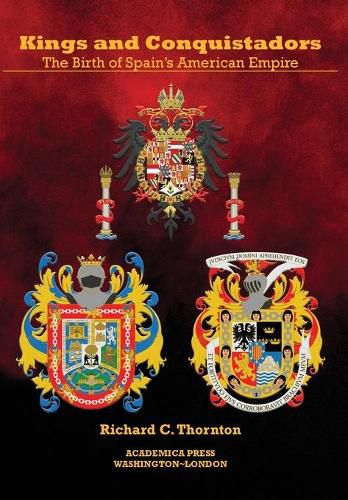Readings Newsletter
Become a Readings Member to make your shopping experience even easier.
Sign in or sign up for free!
You’re not far away from qualifying for FREE standard shipping within Australia
You’ve qualified for FREE standard shipping within Australia
The cart is loading…






This title is printed to order. This book may have been self-published. If so, we cannot guarantee the quality of the content. In the main most books will have gone through the editing process however some may not. We therefore suggest that you be aware of this before ordering this book. If in doubt check either the author or publisher’s details as we are unable to accept any returns unless they are faulty. Please contact us if you have any questions.
Spain’s American empire began as the serendipitous outgrowth of the search for a shortcut to China. That search derived from two mid-fifteenth-century developments: the Ming Dynasty’s decision to adopt a silver standard for its medium of exchange and the Ottoman Turks’ capture of Constantinople in 1453. China’s great demand for silver and the disruption of the Silk Road drove the need to find alternative access to China. King John II of Portugal sent explorers southward along the coast of Africa and thence to the Orient, but Ferdinand and Isabella sent Christopher Columbus westward, believing he would find a shorter route.
A persistent if disorderly push by Spanish conquistadors led to the discovery of previously unknown civilizations, including the empires of the Aztecs and the Incas. The search for a short-cut to China became bound up with the seizure of the riches held by native populations. Although the conquistadors were vastly outnumbered, their superior technology-steel swords, armor, war horses, and firearms-concomitant with diseases that accompanied them, enabled them to subdue native American peoples and confiscate their wealth.
The aftermath was fraught with complications and strife. Crown- appointed governors came into conflict with the conquistadors. Distances were great, and the governors tended to place their interests over those of the King. Cortez conquered the Aztecs despite the governor’s attempts to prevent his campaign. Bureaucratic interference bedeviled Francisco Pizzaro’s campaign against the Incas, which, nonetheless, contributed more to the wealth of his country than any other conquistador’s exploits. Ultimately, the vast wealth of the Americas would fuel Spain and its Empire for nearly two centuries.
$9.00 standard shipping within Australia
FREE standard shipping within Australia for orders over $100.00
Express & International shipping calculated at checkout
This title is printed to order. This book may have been self-published. If so, we cannot guarantee the quality of the content. In the main most books will have gone through the editing process however some may not. We therefore suggest that you be aware of this before ordering this book. If in doubt check either the author or publisher’s details as we are unable to accept any returns unless they are faulty. Please contact us if you have any questions.
Spain’s American empire began as the serendipitous outgrowth of the search for a shortcut to China. That search derived from two mid-fifteenth-century developments: the Ming Dynasty’s decision to adopt a silver standard for its medium of exchange and the Ottoman Turks’ capture of Constantinople in 1453. China’s great demand for silver and the disruption of the Silk Road drove the need to find alternative access to China. King John II of Portugal sent explorers southward along the coast of Africa and thence to the Orient, but Ferdinand and Isabella sent Christopher Columbus westward, believing he would find a shorter route.
A persistent if disorderly push by Spanish conquistadors led to the discovery of previously unknown civilizations, including the empires of the Aztecs and the Incas. The search for a short-cut to China became bound up with the seizure of the riches held by native populations. Although the conquistadors were vastly outnumbered, their superior technology-steel swords, armor, war horses, and firearms-concomitant with diseases that accompanied them, enabled them to subdue native American peoples and confiscate their wealth.
The aftermath was fraught with complications and strife. Crown- appointed governors came into conflict with the conquistadors. Distances were great, and the governors tended to place their interests over those of the King. Cortez conquered the Aztecs despite the governor’s attempts to prevent his campaign. Bureaucratic interference bedeviled Francisco Pizzaro’s campaign against the Incas, which, nonetheless, contributed more to the wealth of his country than any other conquistador’s exploits. Ultimately, the vast wealth of the Americas would fuel Spain and its Empire for nearly two centuries.